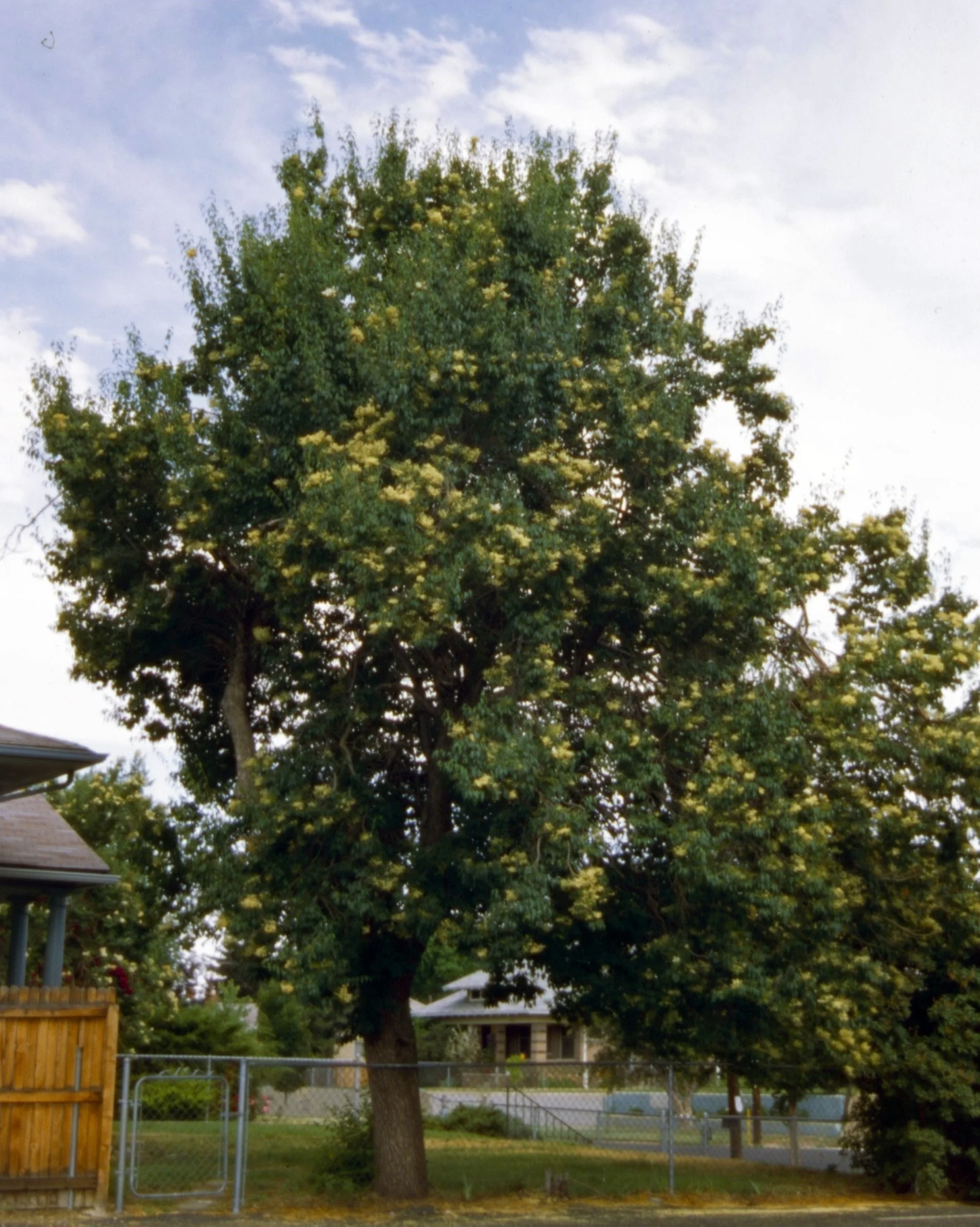Japanese tree lilac (Syringa reticulata)
Second place champion Japanese tree lilac in Denver.
Species info:
Leaves: Opposite, simple, oval to elliptic, 2–5 inches long, dark green, with smooth margins and pointed tips.
Leaflets: None (simple leaf).
Leaf Surface: Smooth and glossy above; paler and slightly matte beneath.
Bark: Shiny brown to grayish-brown with prominent horizontal lenticels; becomes slightly scaly with age.
Flowers: Large, creamy-white, fragrant panicles up to 12 inches long appearing in early to mid-June (after most other ornamentals).
Fruit: Small brown capsules in clusters, persisting into winter.
Botanical: Syringa reticulata
Family: Oleaceae
Mature Height: 20–25 feet
Canopy Spread: 15–20 feet
Foliage Type: Deciduous
Tree Shape: Rounded to oval crown with upright branching
Growth Rate: Medium
Flowers: Showy, mildly fragrant
Fruit: Inconspicuous
Fall Color: Dull yellow to light greenish-yellow
Water Use: Moderate; drought-tolerant once established but prefers consistent moisture
Hardiness: Zones 3–7 (hardy to –30°F; suitable for most of Colorado’s Front Range)
Soil Preference: Adaptable to a wide range of soils, including alkaline, clay, and loamy soils; prefers well-drained conditions
Sun Exposure: Full sun (minimum of half-day exposure required)
Wildlife Value: Flowers attract pollinators, including bees and butterflies
Pests/Pathogens: Generally resistant; may experience powdery mildew, bacterial blight, or scale under stress
Planting Recommendations: Recommended for most sites along the Front Range
Information Sources:
Front Range Tree Recommendation List


